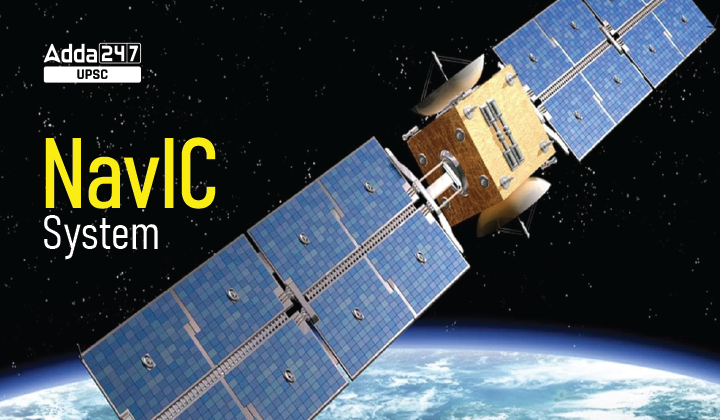Table of Contents
NavIC- Navigation with Indian Constellation- Relevance for UPSC Exam
General Studies III- Achievements Of Indians In S&T
NavIC: In News
The Union government is pushing tech giants to make smartphones compatible with its home-grown navigation system ‘NavIC’.
What is NavIC?
- NavIC, or Navigation with Indian Constellation, is an independent stand-alone navigation satellite system developed by the Indian Space Research Organisation (ISRO).
- NavIC was originally approved in 2006 at a cost of $174 million.
- It was expected to be completed by late 2011, but only became operational in 2018.
- NavIC consists of eight satellites and covers the whole of India’s landmass and up to 1,500 km (930 miles) from its boundaries.
Fact: The numbers of satellites in this constellation is disputed. It is given as 7 and 8 on different sources. Total Nine satellites were launched out of which the very first (IRNSS-1A) is partially failed because of some issue in its Atomic Clock. Another and the last satellite had a launch failure. Hence the number 7/8.
Why is the Centre pushing for NavIC?
- Currently, NavIC’s use is limited.
- It is being used in public vehicle tracking in India.
- It helps providing emergency warning alerts to fishermen venturing into the deep sea where there is no terrestrial network connectivity, and for tracking and providing information related to natural disasters.
- Enabling it in smartphones is the next step India is pushing for.
- India’s 2021 satellite navigation draft policy stated the government will work towards expanding the coverage from regional to global to ensure availability of NavIC signal in any part of the world.
NavIC: Comparison
- The main difference is the serviceable area covered by these systems.
- GPS caters to users across the globe and its satellites circle the earth twice a day, while NavIC is currently for use in India and adjacent areas.
- Like GPS, there are three more navigation systems that have global coverage – Galileo from the European Union, Russia-owned GLONASS and China’s Beidou.
- QZSS, operated by Japan, is another regional navigation system covering Asia-Oceania region, with a focus on Japan.
Strategic significance of NavIC
- India says NavIC is conceived with the aim of removing dependence on foreign satellite systems for navigation service requirements, particularly for “strategic sectors.”
- Relying on systems like GPS and GLONASS may not always be reliable, India says, as those are operated by the defence agencies of respective nations.
- It is possible that civilian services can be degraded or denied.
- NavIC is an indigenous positioning system that is under Indian control.
- There is no risk of the service being withdrawn or denied in a given situation.




 TSPSC Group 1 Question Paper 2024, Downl...
TSPSC Group 1 Question Paper 2024, Downl...
 TSPSC Group 1 Answer key 2024 Out, Downl...
TSPSC Group 1 Answer key 2024 Out, Downl...
 UPSC Prelims 2024 Question Paper, Downlo...
UPSC Prelims 2024 Question Paper, Downlo...





